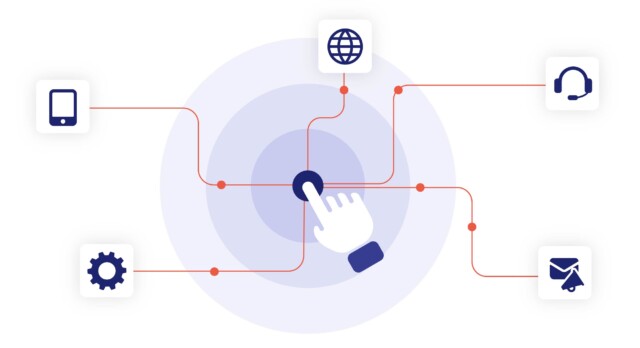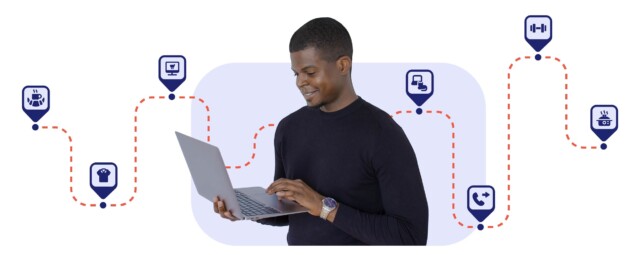Customer Experience Business Intelligence
With customer experience business intelligence (CXBI), businesses can leverage customer data for strategic decision-making. From predictive analytics to customer journey mapping, discover how customer experience business intelligence can create seamless user experiences.
What is customer experience business intelligence?
In customer experience business intelligence, data analytics is used to improve customer-brand interactions across all touchpoints. CXBI capabilities include real-time reporting, machine learning, customer journey mapping, and sentiment analysis.
By leveraging customer data, customer experience business intelligence delivers personalized experiences at scale, driving ROI.

CXBI Solutions by Diabolocom
Benefits of customer experience business intelligence
Challenges of customer experience business intelligence
Data Integration Issues
Customer experience business intelligence requires data consolidation across numerous platforms like website analytics, social media, and email. This process involves complex data integration tools, data warehousing, and real-time processing.
Potential pitfalls may include difficulty in aggregating data from isolated sets known as “data silos”, and incomplete data or data lacking context.
Difficulty Translating Data into Actions
Too much data can make it difficult to extract critical insights and translate them into actionable steps. Data overload often results in analysis paralysis, a condition where teams or individuals are stalled by too much data and lack of clear objectives.
To combat analysis paralysis, develop a clear data strategy that prioritizes KPIs which matter most to your bottom line
Using customer experience business intelligence
Optimize Customer Journeys
Customer experience business intelligence is crucial for optimizing customer journeys and minimizing inefficiencies. Leverage real-time data to provide actionable insights to agents during live interactions. Utilize AI-powered post-call analytics to identify patterns in customer behavior, refining call routing and agent training.

Data-Driven Personalization
Boost product placements and support agents with real-time data using customer experience business intelligence. Help agents provide relevant suggestions based on customer needs and past interactions. Resolve issues quickly and efficiently with Agent-Assist by Diabolocom.

How to Implement customer experience business intelligence?
FAQ
How can customer experience business intelligence metrics improve decision-making?
Customer experience business intelligence (CXBI) leverages real-time data and customer interaction metrics to provide actionable insights for strategic decision-making. This helps businesses anticipate customer behavior and make informed decisions when it comes to building brand experiences.
Can you integrate CXBI tools with existing CRM and ERP systems?
Yes, customer experience business intelligence tools can be seamlessly integrated with existing CRM and ERP systems to sync data across multiple platforms. Successful integration enables customer journey mapping across all touchpoints, helping maintain consistency for diverse channels and devices.
How to ensure data quality when using CXBI tools?
Maintaining superior data quality when using customer experience business intelligence tools is critical for operational efficiency. To ensure good data quality, use automated data validation tools, regularly clean and update your data, and make sure to document the context of the data for future reference.
How to measure ROI on CXBI initiatives?
Identify the most critical KPIs to your bottom line such as customer acquisition and retention. Track these key metrics before and after implementing CXBI initiatives. Assess the financial impact of changes in KPIs and don’t forget to factor in the cost of these initiatives to measure ROI.